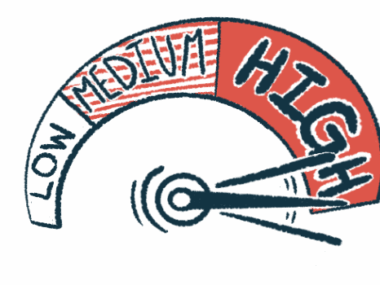Acute HAE Attack Seen With Rare Stroke-like Symptoms: Case Report
Written by |

In rare cases, stroke-like symptoms, such as tingling in the face and the left arm, can occur during an acute attack of hereditary angioedema (HAE), a case study reports.
The patient, a woman in her 30s, developed facial swelling and abdominal pain. All her symptoms resolved with treatment with a C1-inhibitor (C1-INH) concentrate.
“Neurological manifestation as a stroke mimic can be an atypical presentation of an acute [HAE] type I attack that responds favourably to replacement therapy with C1 esterase inhibitor concentrate,” the study’s researchers wrote.
The case study, “Hereditary angio-oedema with C1 inhibitor deficiency type I, an unusual stroke mimic,” was published in BMJ Case Reports.
HAE is a rare genetic disorder marked by sudden and recurrent swelling episodes on the face or body, often lasting several days. The condition is caused by mutations that lead to a lack of (type 1) or a less effective (type 2) C1-INH protein, resulting in an enzyme called plasma kallikrein being continuously produced.
This leads to higher than normal levels of bradykinin, a peptide that regulates blood pressure and inflammation by dilating blood vessels. Another feature of the disease are low levels of C4, a component of the complement cascade, which is part of the immune system.
Neurological involvement in HAE is rare, with only a few studies reporting stroke-like symptoms.
Researchers at the Hospital Universitario Central de Asturias in Oviedo, Spain described the case of a woman in her 30s with HAE type 1 manifesting with neurological symptoms.
The woman, who had already been diagnosed with HAE type 1, went to the emergency room after feeling a tingling in the face and the left arm the day before and once more before going to the hospital.
A physical examination showed she had reduced skin sensation in the affected areas. The initial diagnosis was ischemic stroke, which occurs when blood supply to the brain is interrupted due to a blood clot or fatty tissue buildup.
She was diagnosed with a pure sensory stroke, which is marked by altered sensations in parts of the body that don’t lead to other major neurological deficits.
Within a few hours of being admitted, she developed an acute attack of facial swelling and abdominal pain. She received 1,000 international units (IU) of C1-INH concentrate intravenously and her symptoms resolved, including the neurological ones.
At the emergency department, she underwent a CT scan, which showed no evidence of acute ischemic or hemorrhagic cerebral lesions. Blood testes were also normal.
Further tests revealed no brain injury or vessel abnormalities, such as major obstruction to brain supply arteries. The woman had no personal or family history of epilepsy, and no past history of head trauma.
Other possible diagnoses, including a brain tumor and diseases associated with the loss of myelin — the fatty protective coat surrounding nerve cells that’s lost in diseases such as multiple sclerosis — were also dismissed after imaging scans.
The woman was diagnosed with an acute HAE attack presenting with stroke-like symptoms.
By the time of discharge, she continued preventive treatment with C1-INH concentrate. In the first year of follow-up, she experienced no new neurological symptoms.
“Early diagnosis and treatment is essential to avoid unnecessary complementary studies and to prevent the development of a potentially fatal [HAE] type I attack,” the authors wrote, adding a HAE diagnosis can be easily confirmed by measuring C4 levels.






